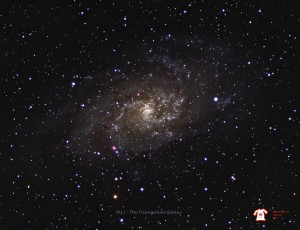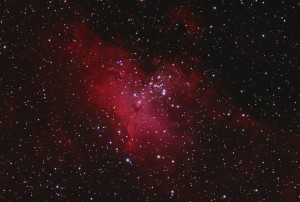In terms of astrophotography, I am still much closer to a stumbling, bumbling amateur than to seasoned veteran. This, is hardly a deterrent to spouting half-baked opinions freely, as both of my readers have likely noticed already.
As an avid woodturner/woodworker, I can attest to a common thread between woodworking and astrophotography… that the first, and often most enticing solution to any problem is to…. wait for it…. buy some gear! Specifically in woodworking, where I am more proficient than with astrophotography, I have come to realize that this “ready-shoot-aim” approach is fun, but not necessarily productive. In fact, as my woodworking skill level improved, I noticed the piles of unused and irrelevant tools grows… as the quality of work improves. Hmmm. That is not to say that there isn’t a place for new and better gear, it is just that now I am more likely to wait to buy a new accessory for my table saw until after the second time I really need it, instead of getting it because “I bet I can use that some day”!!!
Since the toys/accessories for astrophotography are rather expensive, and since (no disrespect to my woodworking friends) the complexities and variability are even greater, I am trying to apply the lessons learned in woodworking to astrophotography. Which finally brings me to the point of this article… skill-building. There is no substitute.
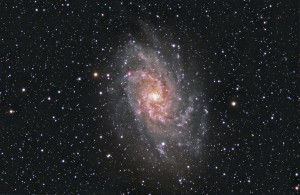
Late last summer, at the Almost Heaven Star Party, I gathered nearly 4 hours of data on M33. A rather bright target, under dark skies, and pretty well tracked. I got home and excitedly processed this data and I was really happy with it. At that time almost all of my processing knowledge was based on the excellent DVD book by Jerry Lodriguss, “Catching the Light“. I was slightly troubled by the fact that the image wasn’t NASA calendar ready, but still, it was the first full year of trying astrophotography… what’s not to like?
As the fall faded into winter and a frigid temperatures curtailed any NEW image collection, I revisited a few of the more successful targets from over the summer (ok the one!). After reading and searching, one can find almost endless sources of guides, tutorials, and instruction on using Photoshop. I settled in on two that are focused on astrophotography and were very helpful to me. First, Warren Keller’s IP4AP (Image Processing for Astrophotographers) series are short, scripted segments averaging around 5 minutes in length. They are snappy and full of information. Additionally, a number of processing articles by Warren are published in Astrophoto Insight, the digital magazine about astrophotography. Contrasted with these tutorials were the somewhat more lengthy and detailed style of Adam Block from his series “Making Every Pixel Count“. Adam, is a slightly more subtle processor than some (my viewpoint) but takes amazing photographs and shares techniques that I have found to work extremely well for me. He also takes you through examples from beginning to end.
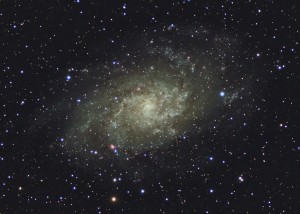
So in early December, armed with my freshly acquired video knowledge, I went back and reprocessed M33. And then I reprocessed it again. And again. And finally, I thought I had an amazing photograph that would surely make all of my friend’s years complete, if only they had their own copy… say as a Christmas present! Well, I probably didn’t really make anybody’s year, but everyone did seem to appreciate the photos.
But I was still unconvinced that I was getting everything that I could from hours of data in wonderfully dark skies on a relatively easy and bright object. So I kept reprocessing, then reviewing tutorials, then reprocessing some more and reviewing some more. I also re-did calibration frames retook grey cards for white balancing, and even went to sleep watching video tutorials (note whenever my wife looks at me and rolls her eyes about this, I always smile and remind her that she could have married a guy who spends every night in a bar!).
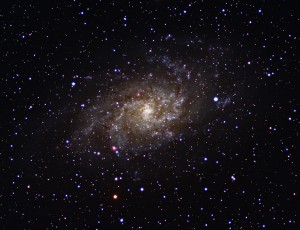
So at the risk of disappointing everyone who was on my Christmas gift list last year, here is where I am today… I want to emphasize again, that each version of this target is the exact same data. The only difference is in the operator understanding better what to do with it. I only hope that the improvements will continue to come. I am still interested in learning and applying deconvolution techniques and perhaps some DDP as well.
